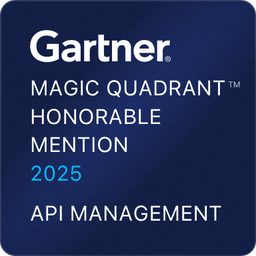Secure Tool Calling for AI Agents. At Scale.
Govern how agents access MCP servers (tools, prompts, resources) with identity-aware policy, session-smart routing, and deep observability.

TRAEFIK LABS IS TRUSTED BY LEADING ENTERPRISES WORLDWIDE
















































The risk in agentic AI isn’t the model—it’s everything agents can access.
The Model Context Protocol (MCP) is a popular standard allowing AI to safely integrate with external tools, data sources, and services. As MCP servers proliferate, enterprises need a single, auditable control point between agents and crown‑jewel systems before over-permissioning, shadow access, and blind spots become the default.
Unbounded Access to Crown‑Jewel Data
- Any agent can call any MCP server unless you enforce least privilege
- Credentials sprawl across apps, CLIs, & notebooks
- No task- or transaction-aware limits (who can do what, when, & on which records)
Operational Fragility in Agent Sessions
- Stateful MCP servers suffer when sessions flap across pods
- Retries & double‑writes spike from non‑deterministic routing
- No single trail explains who did what, where, & why (per agent and policy)
Siloed, After‑the‑Fact Governance
- ACLs or a generic API gateway can't enforce agent-centric access control
- Tool-by-tool rules lack centralized review/versioning
- Observability is fragmented across logs & teams

Introducing the Traefik MCP Gateway
Traefik’s MCP Gateway is the data and control plane between MCP clients (agents) and MCP servers (databases, tools, apps) that enforces TBAC (task, tool, and transaction-based access), stabilizes long-running agent workflows with session-smart routing, and provides deep, audit-ready observability.

TBAC: Task, Tool, & Transaction-Based Access Control
Authorize per agent, task, tool, & transaction with least-privilege policies
Scope by DB/schema/table, verb (read/write), API route, & transaction attributes (record type, amount, time window)
Inject JWT claims & MCP request attributes into policy expressions at runtime
Centralize secrets so credentials never live in agent code

Policy Guardrails at the Edge
Rate & concurrency limits, time windows, & query-pattern checks
Optional topic/PII/jailbreak controls before sensitive systems
GitOps-ready policies with TBAC conditions using JWT claims & request attributes; versioned, reviewed, promoted
Fail-closed defaults with configurable user messaging.

Session-Smart Load Balancing
Server-side session affinity keeps long-running conversations on the same pod
Split pools for read vs. write to protect systems of record
Reduce duplicates, retries, & tail latency under load
Deterministic routing through rollouts & autoscaling

Deep, Unified Observability & Audit
Trace every MCP interaction with OpenTelemetry
Audit mapped to agent identity & policy version
Capacity insights for DBs/tools to right-size safely
OTel-ready data for your preferred dashboards & alerting



Traefik’s MCP Gateway: Secure, Governed, and Auditable
Secure by Design (TBAC)
Lock access to databases & business tools with precise, identity- & task-aware rules. No more over-permissioned agents.
Governed at Runtime
Session‑aware routing and policy guardrails keep agent workflows deterministic and compliant under load. Prevent duplicate writes, retries, and operational drift.
Auditable from Day One
Full visibility into who accessed what, when, & under which policy. Accelerate compliance reviews, incident response, and capacity planning with unified observability.
Get Up and Governing in Four Steps
1
Deploy at the MCP Boundary
Place the gateway between agents (clients) & MCP servers (DBs, tools, APIs).
2
Define TBAC Policies
YAML policies combining agent identity with tasks, tools, & transaction conditions (schemas/tables, verbs, record types, amounts, time windows), with JWT claims & MCP request attributes available at runtime.
3
Enable Affinity & Guardrails
Session-smart balancing, rate & concurrency limits, optional topic/PII controls.
4
Observe & Iterate
Export OTEL traces/metrics/logs; review audits & tune policies as usage grows.


